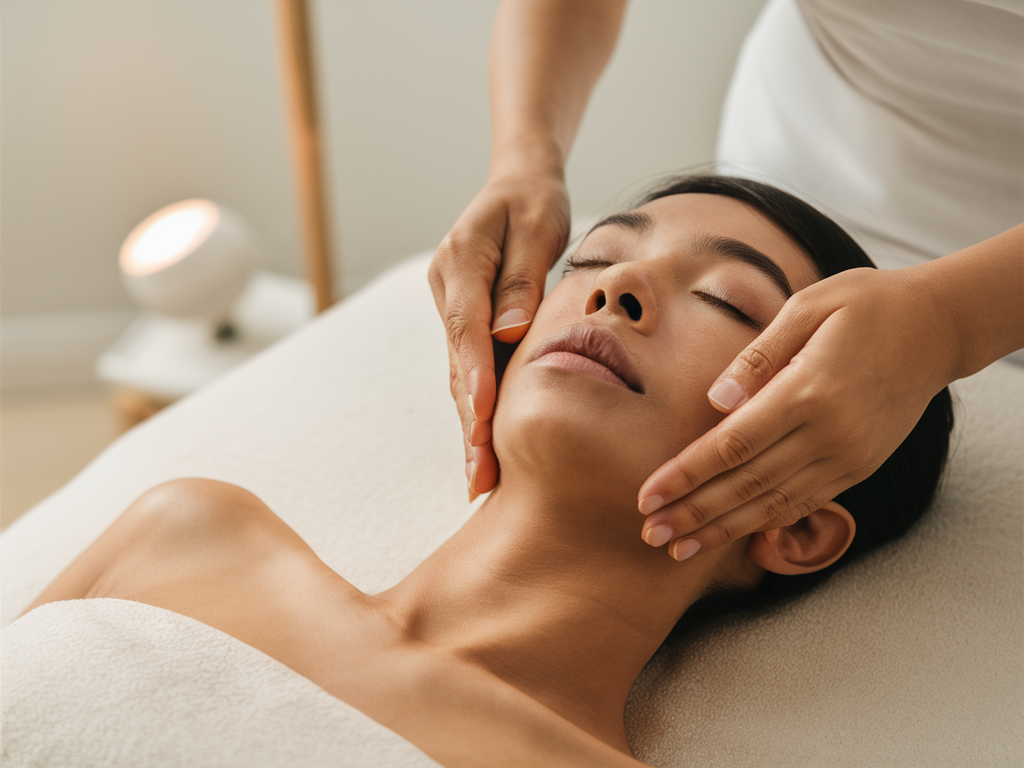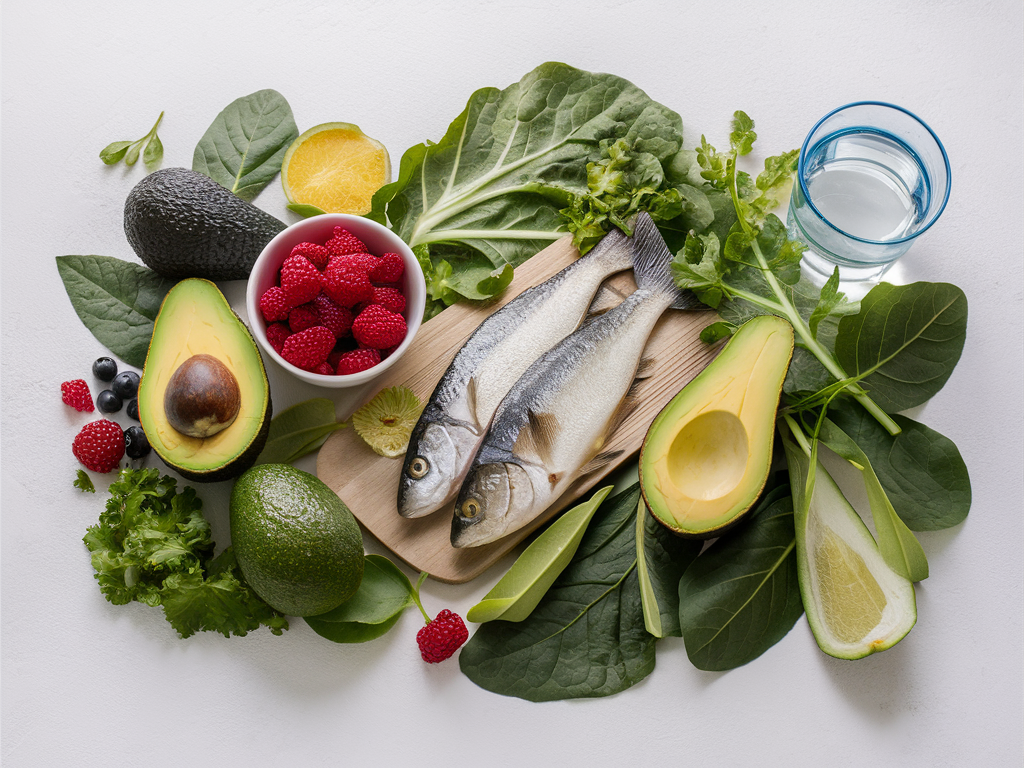Struggling with facial puffiness or a double chin can affect both appearance and self-confidence. Face fat accumulation happens for various reasons – genetics certainly plays a role, but factors like overall body weight, fluid retention, and the natural aging process all contribute to fuller facial features. The good news? You don’t have to simply accept facial roundness as inevitable.
While spot reduction of fat from specific body areas remains challenging, a combination of targeted facial exercises and comprehensive lifestyle modifications can effectively slim down your facial appearance. The strategies outlined below aren’t just anecdotal – they’re grounded in scientific research and endorsed by medical and fitness professionals.
1. Stay Hydrated
Counterintuitively, insufficient water intake often leads to increased water retention and facial bloating. When your body doesn’t receive adequate hydration, it enters a conservation mode, holding onto available water and causing puffiness – particularly noticeable in the face.
Health authorities generally recommend consuming 8-10 cups (64-80 ounces) of water daily, though individual needs vary based on activity level, climate, and overall health. Proper hydration helps your body naturally eliminate toxins and excess sodium, reducing bloating throughout your body – including your face.
For optimal facial definition, consider starting each morning with a glass of water and maintaining consistent hydration throughout the day. Many people notice reduced facial puffiness within days of improving their hydration habits.

2. Perform Facial Exercises
Facial exercises target and strengthen the 57 muscles in your face and neck, potentially improving muscle tone and contributing to a more sculpted appearance. Research published in JAMA Dermatology found that a 30-minute daily facial exercise program helped middle-aged women achieve fuller upper and lower cheeks, effectively counteracting age-related volume loss.
Try incorporating these effective facial exercises into your routine:
- Cheek Puffs: Fill your mouth with air, then transfer the air from one cheek to the other for 30 seconds. Repeat 3 times.
- Jaw Release: Open your mouth while keeping your tongue pressed against your bottom teeth. Hold for 5 seconds, then close. Repeat 10-15 times.
- Fish Face: Suck in your cheeks and lips as if making a fish face. Hold for 5 seconds, relax, and repeat 10 times.
- Neck Stretches: Tilt your head back and press your tongue against the roof of your mouth. This stretches the muscles under your chin. Hold for 10 seconds and repeat 10 times.
For optimal results, perform these exercises 5-6 times weekly for 20-30 minutes per session. Consistency is crucial – most people begin noticing improvements after 4-6 weeks of regular practice.
3. Reduce Overall Body Fat Through Cardio
The face is often one of the first places where weight gain becomes visible – and similarly, one of the first areas to show improvement during weight loss. Cardiovascular exercise represents one of the most effective methods for reducing overall body fat percentage, which directly impacts facial fat deposits.
Particularly effective cardio exercises include:
- High-intensity interval training (HIIT)
- Running or jogging
- Swimming
- Cycling
- Rowing
For optimal fat-burning results, aim for 150-300 minutes of moderate-intensity activity weekly, as recommended by the American Heart Association. Structure your routine to include 3-5 cardio sessions per week, with each session lasting 30-60 minutes depending on intensity.
4. Practice Face Yoga and Massage
Facial massage and yoga techniques stimulate blood circulation and promote lymphatic drainage, helping eliminate toxins and reduce fluid retention that contributes to facial puffiness. These practices may also help prevent the formation of wrinkles while improving muscle tone.
Simple techniques to incorporate into your routine include:
- Gentle upward strokes with your fingertips from jawline to temples
- Circular motions around the mouth and cheeks
- Light tapping movements along the jawline
- Lion’s Breath yoga pose – inhale through the nose, exhale through the mouth while sticking out your tongue and stretching facial muscles
For best results, perform facial massage for 5-10 minutes daily, preferably after applying a facial oil or moisturizer to reduce friction. Incorporate these techniques into your morning or evening skincare routine.

5. Limit Alcohol Consumption
Alcoholic beverages significantly impact facial appearance through multiple mechanisms. Alcohol acts as a diuretic, leading to dehydration while simultaneously causing inflammation and water retention. The result? That characteristic morning-after facial puffiness and bloating.
Additionally, alcoholic drinks – particularly beer and sugary cocktails – contain substantial calories that can contribute to weight gain and increased facial fat over time. They may also trigger inflammation throughout the body, exacerbating facial puffiness.
Health guidelines suggest limiting consumption to no more than one drink daily for women and two for men. For those specifically concerned about facial fat, consider further reducing intake or eliminating alcohol temporarily to observe changes in facial definition.
6. Improve Your Diet
Dietary choices significantly impact facial bloating and fat accumulation. Particular culprits include:
- High-sodium foods (processed meats, canned soups, savory snacks)
- Refined carbohydrates (white bread, pastries)
- Sugary foods and beverages
- Alcohol
- Highly processed foods containing artificial additives
Instead, prioritize a balanced diet featuring:
- Potassium-rich foods (bananas, avocados, leafy greens) to counteract sodium’s bloating effects
- Lean proteins (chicken, fish, legumes) to support muscle maintenance
- Anti-inflammatory foods (berries, fatty fish, nuts, olive oil) to reduce puffiness
- Hydrating foods (cucumber, watermelon, celery) to support optimal fluid balance
Particularly beneficial is reducing sodium intake below the recommended maximum of 2,300mg daily. Many people notice reduced facial puffiness within days of decreasing salt consumption.
7. Get Sufficient Sleep
Sleep deprivation directly contributes to facial puffiness through multiple biological mechanisms. Insufficient rest disrupts fluid balance, increases stress hormone production, and impairs the body’s natural overnight detoxification processes – all factors that can manifest as facial bloating and puffiness.
The National Sleep Foundation recommends 7-9 hours of quality sleep nightly for adults. Beyond quantity, sleep quality matters significantly for facial appearance. Consider these strategies to enhance sleep effectiveness:
- Maintain consistent sleep and wake times
- Create a dark, cool sleeping environment
- Limit screen exposure before bedtime
- Elevate your head slightly to prevent fluid accumulation in the face
- Avoid eating heavy meals within 2-3 hours of bedtime
Many people report noticeably improved facial definition after just a week of enhanced sleep habits.
8. Reduce Refined Carbs and Sugar
Refined carbohydrates and added sugars significantly impact facial appearance beyond their caloric contribution to weight gain. These high-glycemic foods trigger insulin spikes, which can promote fat storage and increase inflammation throughout the body, including the face.
Additionally, sugar consumption may damage collagen and elastin – proteins essential for skin firmness and elasticity. Over time, this can lead to sagging facial features that exacerbate the appearance of facial fullness.
Consider substituting these healthier alternatives:
- Whole grains instead of white flour products
- Fresh fruit rather than sugary desserts
- Sweet potatoes or legumes in place of white potatoes
- Greek yogurt with cinnamon instead of sweetened yogurts
- Dark chocolate (70%+ cacao) in moderation as a treat
Reducing refined carbohydrate and sugar intake often produces noticeable improvements in facial definition within 2-4 weeks as inflammation subsides and water balance normalizes.

9. Try Facial Sculpting Tools
Various facial tools have gained popularity for their ability to temporarily reduce puffiness and enhance facial contours. These tools work primarily by stimulating lymphatic drainage and improving circulation, rather than directly reducing fat.
Popular options include:
- Jade or Rose Quartz Rollers: These traditional stone tools provide gentle massage when rolled across the face, reducing puffiness and improving circulation.
- Gua Sha Tools: These flat stones with curved edges are used to “scrape” the facial contours gently, stimulating lymphatic drainage and temporarity enhancing definition.
- Facial Cupping Sets: Small silicone cups create gentle suction that may help define facial contours and reduce puffiness.
- Ice Rollers: These tools combine massage with cold therapy to reduce inflammation and temporarily tighten the skin.
For best results, use these tools after applying facial oil or serum to allow smooth gliding across the skin. Most experts recommend using facial tools for 5-10 minutes daily, always working in upward and outward motions to encourage lymphatic drainage.
10. Consider Professional Treatments
For those seeking more significant or immediate results, various professional treatments target facial fat and contours specifically. These range from non-invasive to minimally invasive options:
Non-invasive treatments include:
- Radiofrequency therapy: Uses energy waves to heat and contract collagen fibers while promoting new collagen production, resulting in tighter facial contours.
- Ultrasound therapy: Delivers focused ultrasound energy to the deeper skin layers, stimulating collagen production and tightening facial tissues.
- Cryolipolysis: Applies controlled cooling to freeze and reduce fat cells in specific areas, including under the chin.
Minimally invasive options include:
- Kybella injections: An FDA-approved injectable treatment that destroys fat cells under the chin, resulting in a more defined jawline.
- Strategic fillers: While fillers add volume, strategic placement by skilled professionals can enhance facial contours and create the appearance of a more sculpted face.
Consultation with a board-certified dermatologist or plastic surgeon is essential to determine which treatment might best address your specific concerns and facial anatomy. These professionals can provide personalized recommendations based on your goals, budget, and medical history.
Conclusion
Reducing facial fat requires patience and consistency – most people begin noticing subtle improvements within 2-4 weeks of implementing these strategies, with more significant changes appearing after 2-3 months of dedicated effort. Remember that genetics plays a substantial role in facial structure, so focus on realistic improvements rather than dramatic transformations.
The most effective approach combines multiple strategies from this list, creating a comprehensive lifestyle adjustment rather than relying on a single technique. Begin with the simplest changes – improving hydration, practicing facial exercises, and enhancing sleep quality – before progressing to more intensive approaches.
Beyond the aesthetic benefits, these strategies offer significant improvements to overall health. Better hydration, reduced alcohol consumption, improved diet, adequate sleep, and regular exercise contribute to enhanced wellbeing far beyond facial appearance – making these adjustments valuable regardless of their impact on facial contours.
With consistent application of these science-backed methods, you can achieve a more defined facial appearance while simultaneously improving your overall health and confidence.

